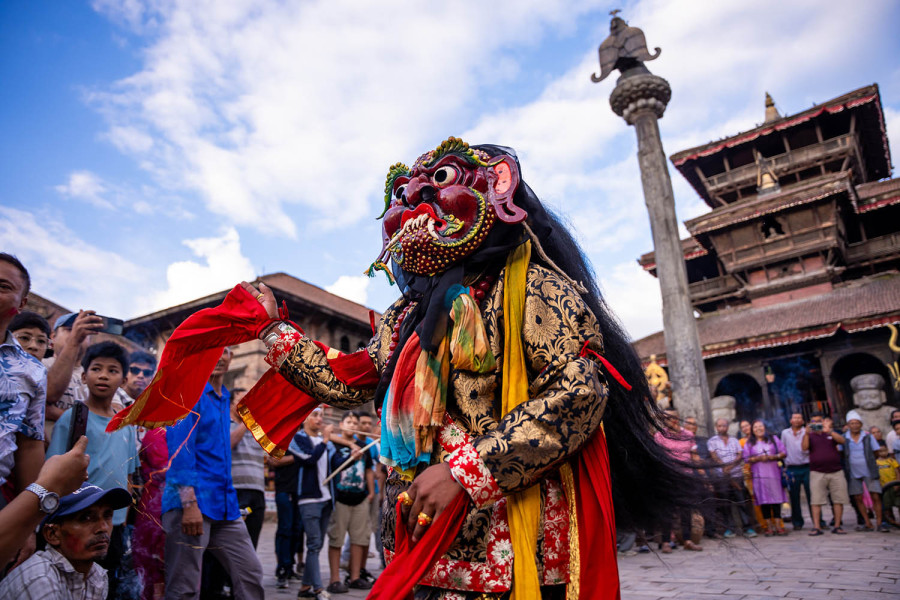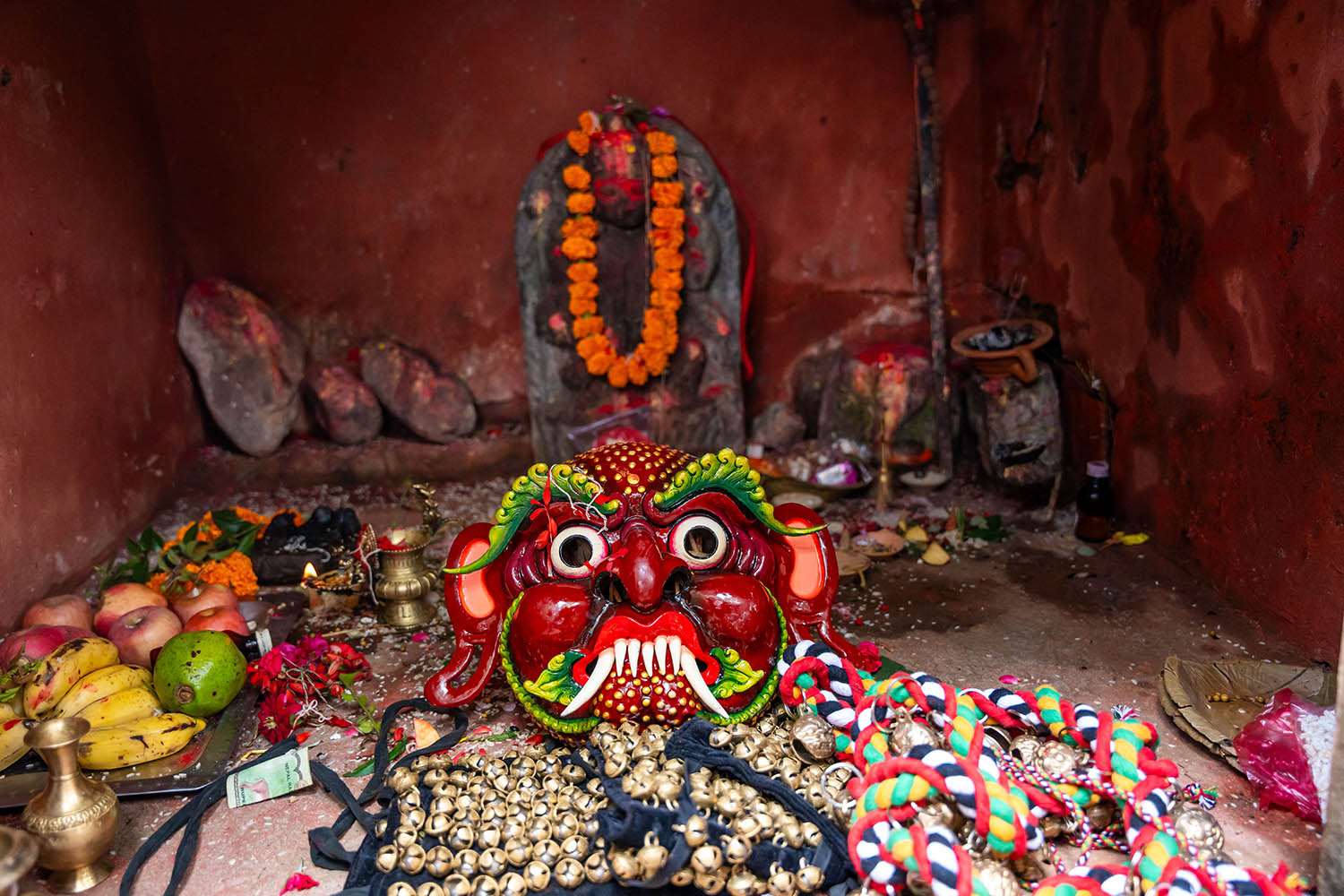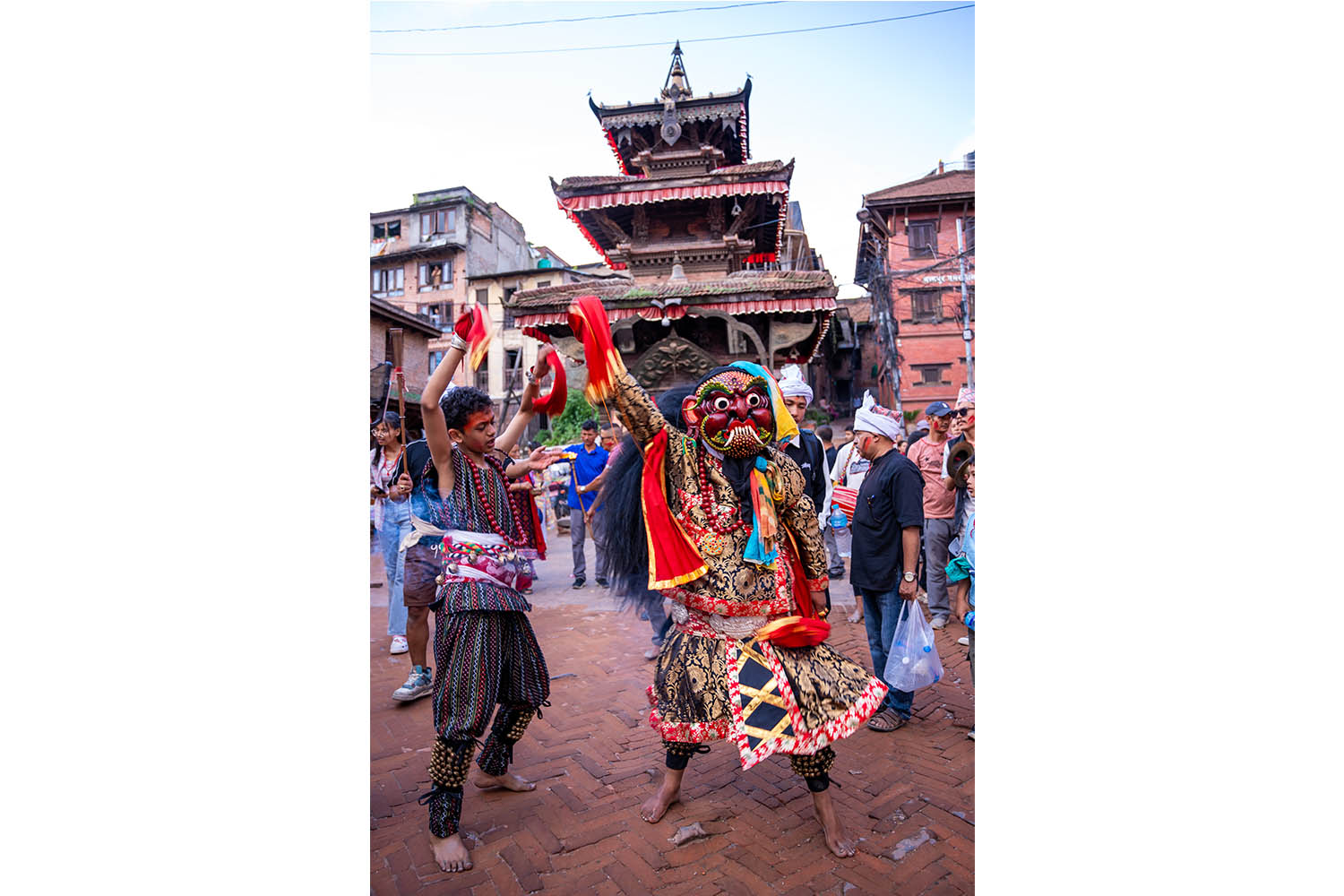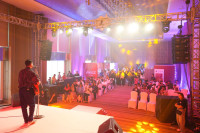Culture & Lifestyle
Khwopa Lakhe reintroduced after 90 years
After months of practice and preparations, Ranjitkar Samaj officially resumed the long-lost Lakhe dance. This year, the dance will be performed for two days on the occasion of Indra Jatra.
Timila Maharjan
The Lakhe dance halted after the devastating 1934 earthquake, has been officially restored. Earlier this month, with a formal tantric puja at the Lakhe residence in Bhaktapur’s Changunarayan Municipality, ward no 7, the Ranjitkar community of Bhaktapur revived the 90-year-old Lakhe dance.
Rabi Shakya, a sculptor and samrakshyak of Sampada Samrakshyan Maha Abhiyan, explains, “The 1934 earthquake caused massive destruction in Bhaktapur, making it impossible to recover any remnants of the Lakhe mask, costume, or jewellery.” He added that he created the new Lakhe mask after a month of intensive work and is now the primary teacher of the dance.
Since no references to the old Lakhe mask and dance existed after the earthquake, the sculptor recreated it based on the Goddess Nawa Durga. Shakya explains, “Together with a tantric purohit and a Lakhe gurju, I visited the Lakhe residence at night to visualise the old Lakhe mask. Consequently, using both the Goddess Nawa Durga as a reference and the visual aids, I crafted the new mask.”
He notes that while there are many stories about Lakhe, the actual appearance of the Lakhe is unknown. As a result, people visualised the Lakhe’s face and dance through tantric rituals, and the Lakhe dances were performed in ancient times as well. Lakhe residences are believed to date back to the Kirant period, and the Lakhe dance has been performed since the Malla period. Each step in the Lakhe dance carries its meaning and significance.

According to Sunil Prajapati, president of Sampada Samrakshyan Maha Abhiyan, this Lakhe residence of Bhaktapur is possibly the only place in Nepal with a statue.
The Ranjitkar group was established in 1999, with the Bhaktapur branch starting in 2002. After discovering the lost Lakhe dance, they spent two years researching and gathering more information about it. Ganesh Ram Ranjit, treasurer of Ranjitkar Samaj, states, “It is possible that the Lakhe mask, costumes, and jewellery were destroyed in the 1934 earthquake. However, there are also rumours that those involved in the Lakhe dance might have migrated elsewhere with masks and costumes. While we know the Lakhe dance became extinct after the 1934 earthquake, the exact reasons remain unclear.”
Shakya explains, “Lakhe are considered forms of the Yakshya God and were present in places known as Lakhe khya or khela. They served as protectors of the people, and when infants and children were ill, they were taken to the Lakhe.” He adds, “Historically, people offered food, grains and money to support the Lakhe dancers’ livelihood. However, nowadays, many perform the Lakhe dance primarily to earn money. I believe turning the Lakhe dance into a source of entertainment and income is wrong. On the positive side, the number of Lakhe is increasing as more communities start their own Lakhe dances. In ancient times, there were 32 Lakhe in the Nepal Mandal.”
Shakya notes that he has never witnessed a Lakhe dance in Bhaktapur before and is seeing it for the first time. He has only seen the Nawa Durga Devi’s dance among the masked performances in Bhaktapur.
Shakya says, “When the people from Ranjitkar Samaj came to me about the lost Lakhe dance and asked me to make a Lakhe mask, I was thrilled to hear about their efforts to revive the Ranjitkar Lakhe dance. I was eager to help and didn’t charge anything for making the mask, as I wanted to contribute to this important work.”
Ranjit added that reviving the dance, including teaching the dancers, creating the mask, costumes, jewellery, and organising feasts, cost three lakhs. All expenses were covered by Ranjitkar Samaj, with additional support from individual donations.

On August 4, the Lakhe dance was presented to the public after completing teaching and practice sessions. Proper rituals, offerings, and sacrifices were performed that day. Ranjit explains, “We chose August 4 because these rituals and celebrations are typically held on Sundays or Thursdays. August 4 was particularly auspicious as it was a Sunday, the day after the Ghantakarna festival.” The event featured five Lakhe dancers, a Guru, and two assistants who taught the dance. Currently, the Lakhe mask and costumes are housed at the Ranjitkar Guthi.
Shakya expresses concern that modern silk t-shirts worn by Lakhe dancers compromise the authenticity of Lakhe costumes and culture. “I am completely against modernising Lakhe costumes,” he says. “The original Lakhe attire includes the Cholo, Jama (skirt) and Janai (a sacred thread). For the Khwopa Lakhe, we have used traditional costumes and even included a tiger skin belt, as a tiger frequently visits the Lakhe residence in Bhaktapur.”
The Ranjitkar Samaj is establishing a fund to support the Lakhe dance. An old Lakhe land might also be used to help sustain the dance.
The Lakhe dance will be formally performed during the Indra Jatra festival for two days, on Ashoj 1 and 2. Shakya, the main guru of the Lakhe dance, notes, “We completed the teaching of the Lakhe dance and presented it to the public on August 8. It will now be performed during the Indra Jatra.”




 12.12°C Kathmandu
12.12°C Kathmandu













%20(1).jpg&w=300&height=200)

